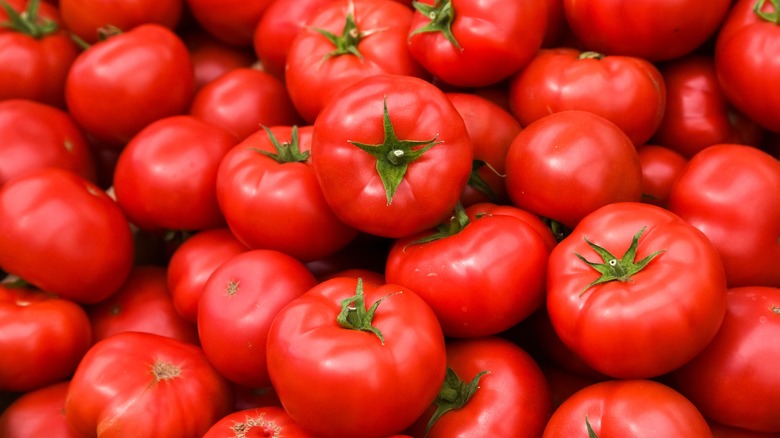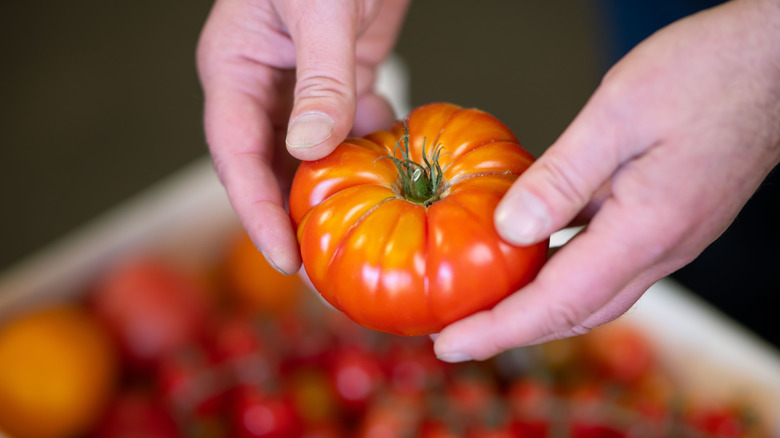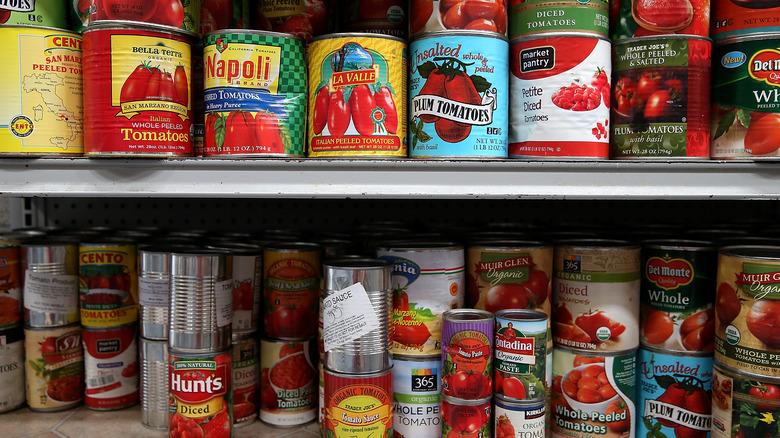Why It Seems Like Tomatoes Are Becoming Less Flavorful
There is nothing more disappointing than a bad tomato. Throughout the year, as you sample the bland offerings at your local grocery store, you may begin to question your own memory: Didn't tomatoes used to taste better when you were plucking them off the vines at your parents' house, or grabbing a crate at the local farmers market?
Not to make it sound like there's a great tomato conspiracy, but you're actually right — tomatoes today are a lot less flavorful on average than they used to be. And this has a lot to do with American history.
Tomato cultivation changed dramatically after World War II, at a time when food production was being ramped up around the United States to support hungry troops, and the population boom that followed their triumphant return. Seed companies modified their existing tomato specimens to make them more pest- and disease-resistant, and to boost productivity. It was very much a strategy of quantity over quality, and an unanticipated result was that many of the essential flavor compounds were lost in this new generation of tomatoes.
What gives a tomato its flavor?
Something you probably didn't know about tomatoes is how far historical tomato breeds have diverged from modern ones. In a 2017 study published in Science, which reviewed 398 types of tomatoes, scientists isolated 13 critical flavor compounds that make the fruits of these plants taste like — well, tomatoes. Many of these flavor compounds, which produce that vibrant combination of acid and umami, have been found to be absent in most commercially produced tomato crops, though they can still be found in traditional tomato varieties. This is why those heirloom tomatoes you buy at the farmers market in August taste so much better than their pale, mass-produced counterparts.
The good news is that this doesn't have to mean the end of tasty tomatoes. It would actually be quite easy for growers to crossbreed their mass-produced tomatoes with older varieties; doing so would yield better-tasting tomatoes that would also maintain some of the benefits of commercial types, like disease resistance and larger sizes. This means we could end up with the best of both worlds.
An argument for canned tomatoes
Who knows how long we'll have to wait for our dream tomato to be born? In the meantime, there are stews and sauces to be made. And while buying fresh tomatoes, even when they're in season, can be a gamble, there is another option: canned tomatoes. They are pantry-friendly, often affordable, and preserved at the peak of their freshness, making them a much safer bet than fresh grocery store tomatoes. Most of them also come from Italy, which is known to have some of the best tomatoes in the world, including the San Marzano tomato, often heralded as the king of tomatoes.
So if it's off-season and you're trying to make a basic tomato sauce or a roasted tomato soup, you might want to stick with a good old handy dandy can of Mutti or Cento tomatoes. Just be sure to buy them whole or crushed, not diced, as the pre-cut canned tomatoes tend to contain additives that the whole versions do not.



